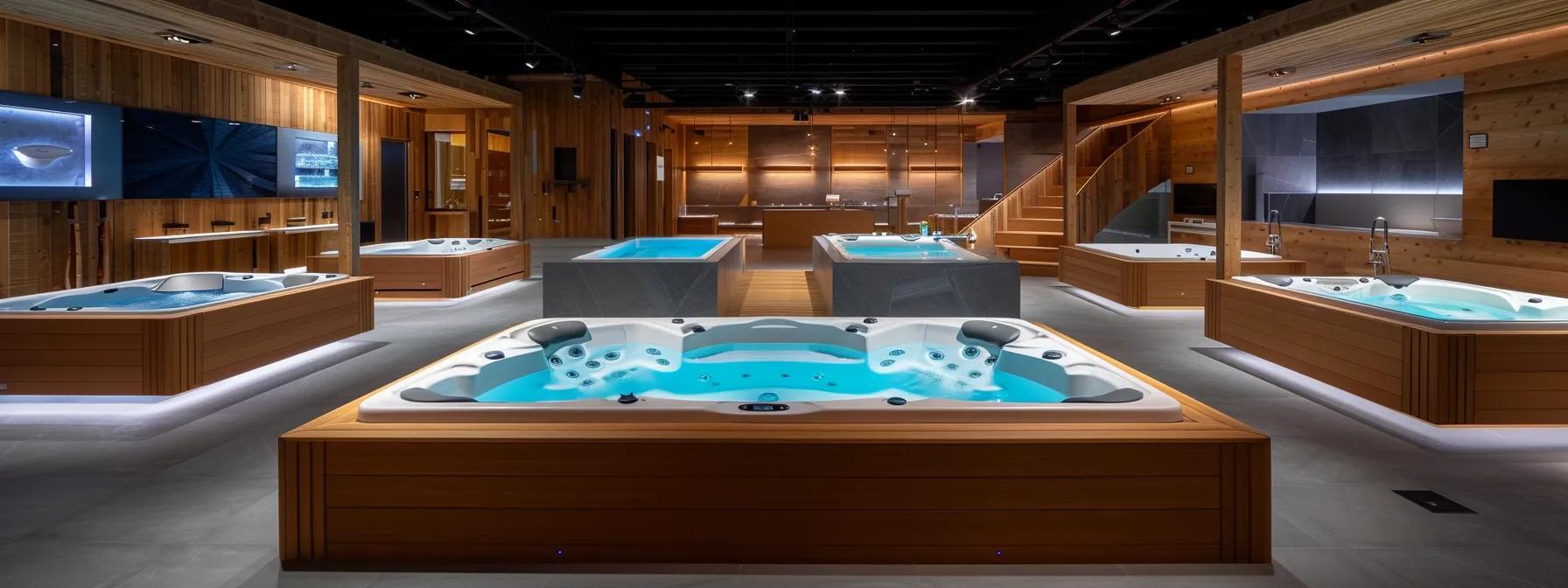Table of Contents - 7 Different Types of Hot Tubs Explained for Buyers
- Introduction
- TLDR – The Different Types of Hot Tubs
- What Are the Different Types of Hot Tubs Available Today?
- What Are the Essential Features to Consider in Different Hot Tub Types?
- How Do Hot Tub Materials Impact Durability and Maintenance?
- What Are the Health and Social Benefits of Using Different Hot Tub Types?
- How to Choose the Right Hot Tub: Buying Guide and Cost Considerations
- What Are the Best Practices for Hot Tub Installation and Maintenance?
- What Are Common Questions About Different Types of Hot Tubs?
- Frequently Asked Questions
- Final Thoughts
This blog post may contain affiliate links. As an Amazon Associate I earn from qualifying purchases.
A Comprehensive Guide to 7 Different Types of Hot Tubs
Introduction
Hot tubs are a popular home addition for relaxation, hot tub hydrotherapy, and socializing. For those who seek a guide to hot tubs, choosing the right hot tub goes beyond purchase, it’s an investment in health and leisure. With a range of options available, from eco-friendly salt water models and plug and play hot tubs to classic wooden tubs and energy efficient hot tubs, understanding the differences is key. This guide outlines the unique characteristics, essential features, maintenance tips, and health benefits of various hot tub types. It also provides a buying guide with cost and installation considerations to help you transform your backyard into a personal spa.
TLDR – The Different Types of Hot Tubs
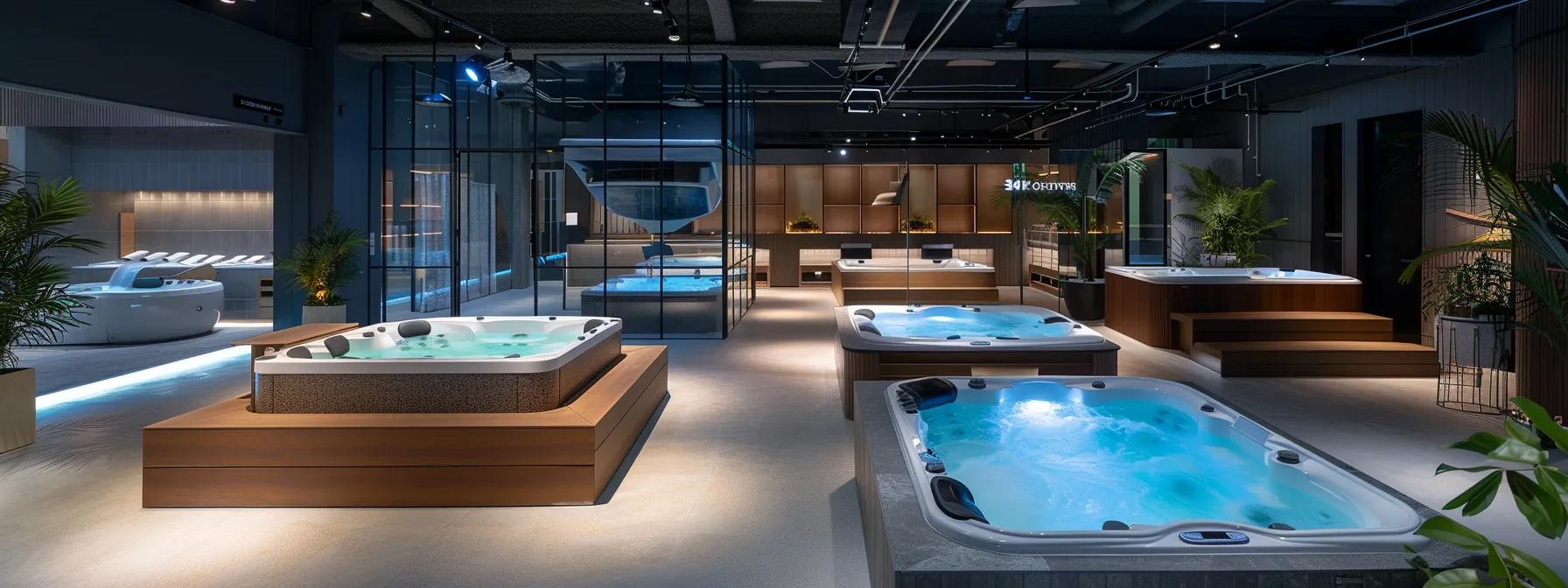
Inflatable Hot Tubs
Inflatable hot tubs, known as plug and play hot tubs, are designed for quick setup and easy portability. Made from durable, puncture-resistant materials, they do not need permanent installation and are ideal for renters or those on a budget. Equipped with simple controls for temperature and jet intensity, these energy efficient hot tubs offer an accessible spa experience though they may lack long-term aesthetics and durability. For more details, refer to our guide to hot tubs.
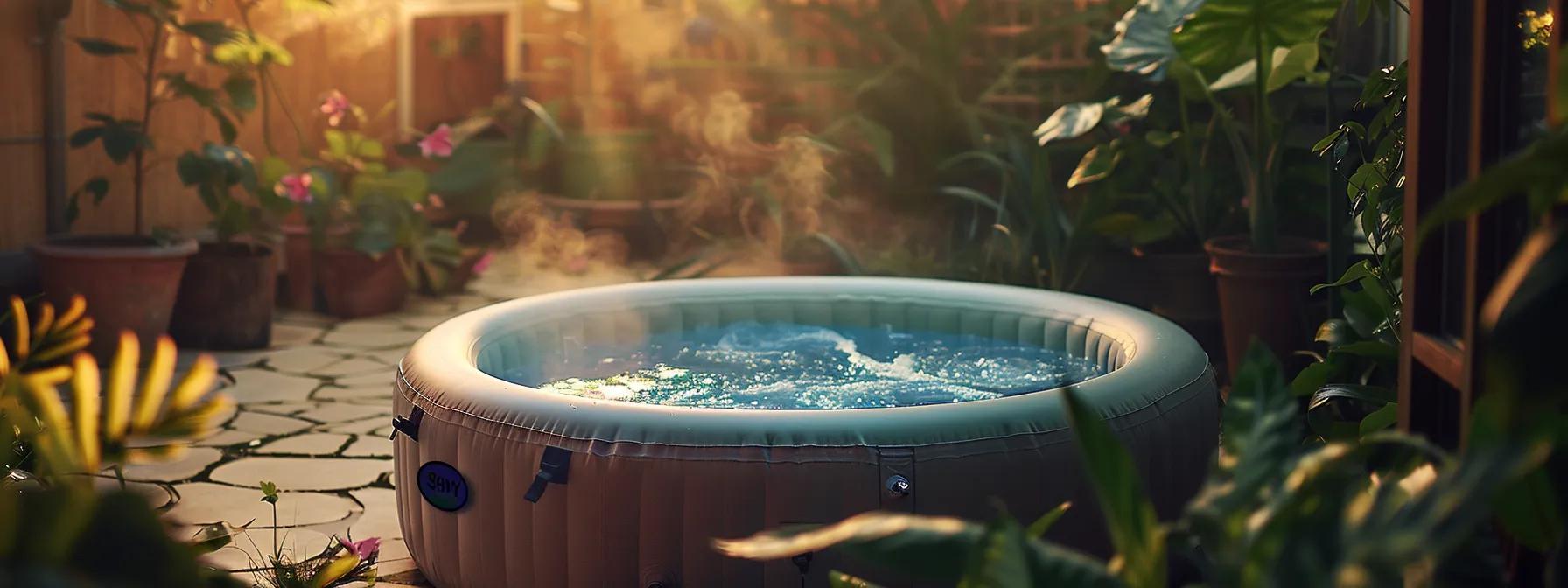
Portable Hot Tubs
Similar to inflatable versions, portable hot tubs such as plug and play hot tubs are built with sturdier materials such as reinforced plastic. They offer better durability, enhanced heating systems -as appreciated by energy efficient hot tubs enthusiasts and stronger jets. Available in various shapes and sizes with features like digital controls, a guide to hot tubs helps users explore options like hot tubs for couples, ensuring a balance between luxury and ease of relocation without a permanent structure.
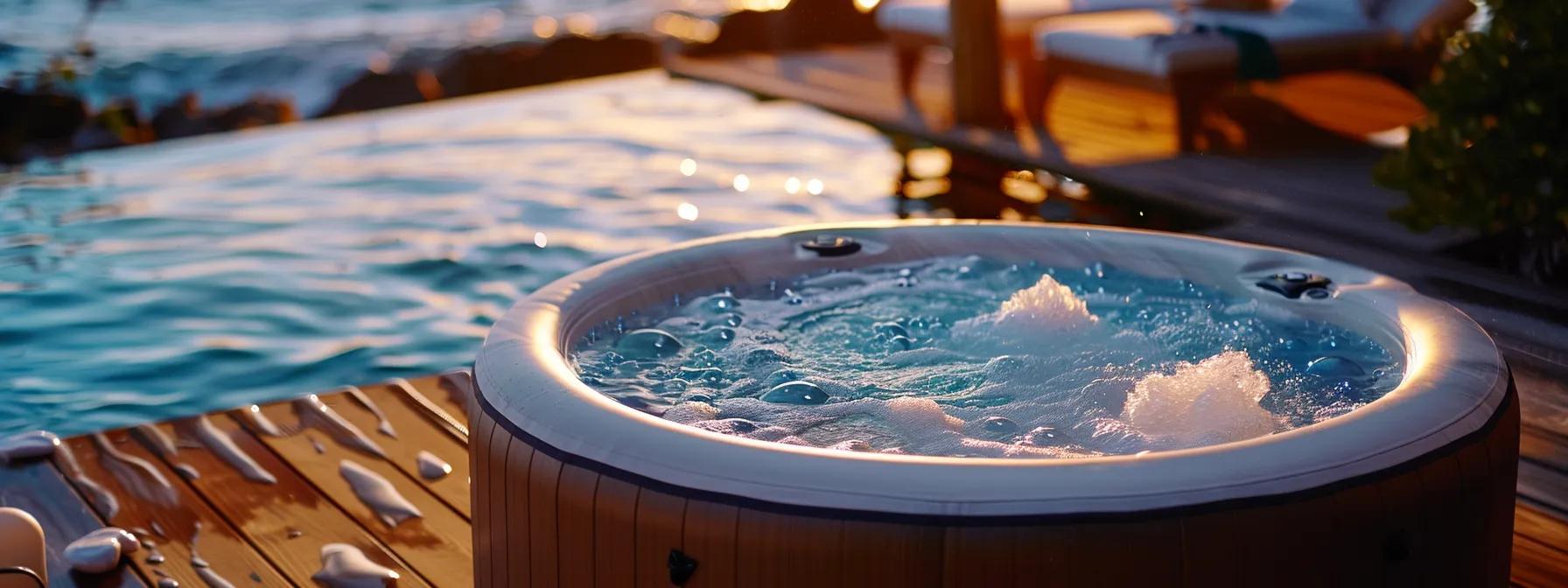
Salt Water Hot Tubs
salt water hot tubs, often regarded as plug and play hot tubs, use a salt-chlorine generator to produce a milder, skin-friendly chlorine treatment. This method reduces harsh chemicals and frequent maintenance, keeping the water comfortable and naturally balanced. Furthermore, these energy efficient hot tubs are ideal for hot tubs for couples looking for a relaxing, low-maintenance experience. Although the initial system cost may be higher, reduced chemical use and upkeep can save money over time, making these tubs ideal for eco-conscious users with sensitive skin. It is important to use a hot tub chemical monitoring system with salt water hot tubs.
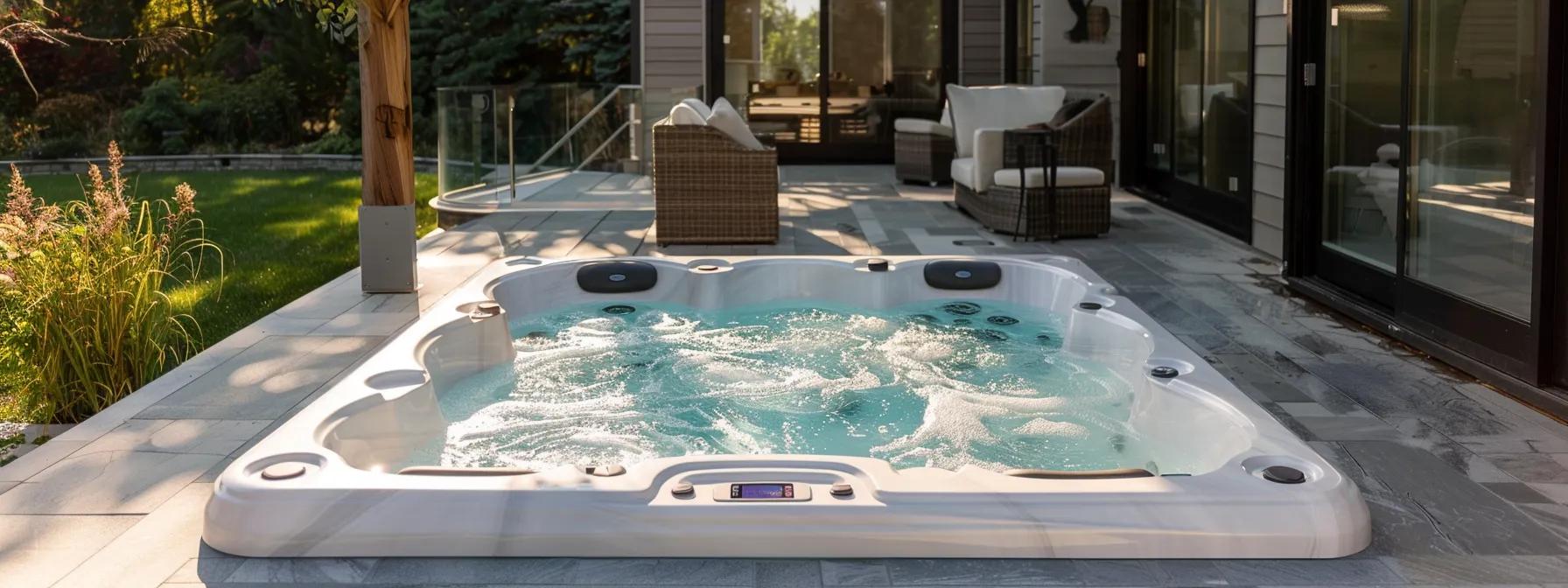
Wooden Hot Tubs
Wooden hot tubs offer a rustic, natural appeal with excellent insulation properties that make them an excellent example of energy efficient hot tubs. Often handcrafted from cedar or redwood, these plug and play hot tubs provide a warm, relaxing aesthetic that enhances outdoor spaces and are even popular as hot tubs for couples. While their customization options and unique charm are attractive, a comprehensive guide to hot tubs is often consulted to manage regular maintenance such as sealing and refinishing to protect against weathering.
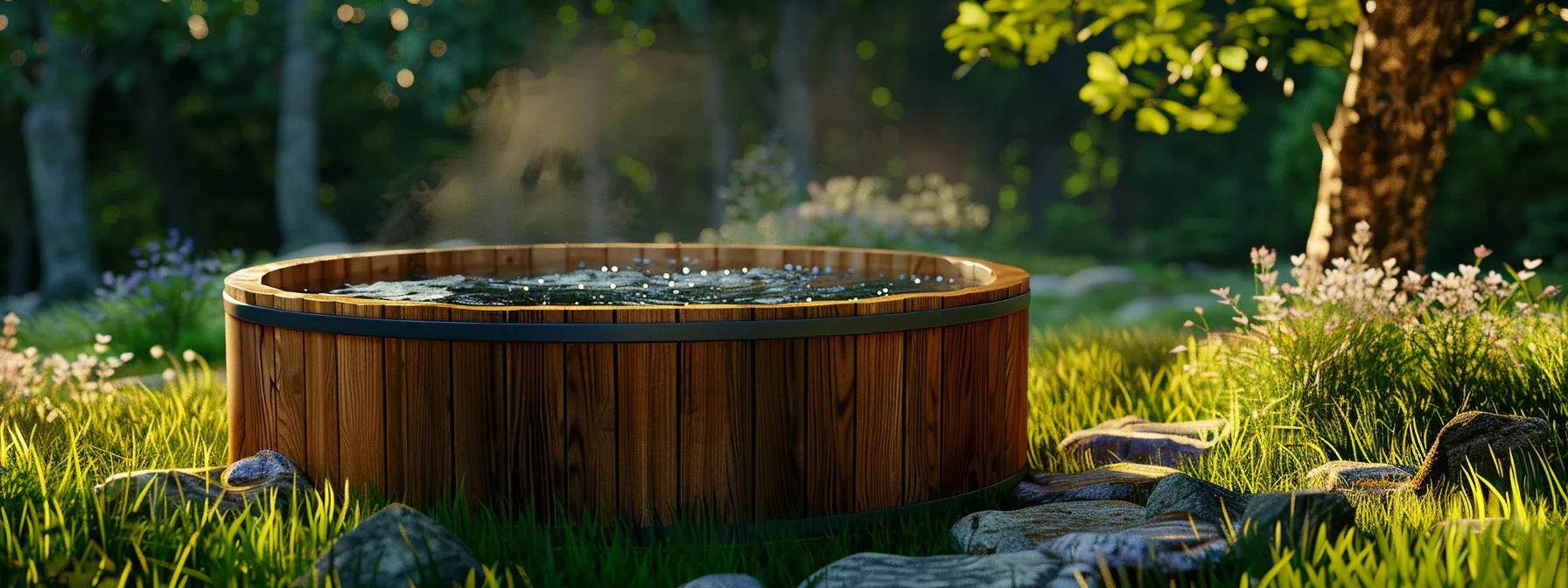
Acrylic Hot Tubs
Acrylic hot tubs are favored for their sleek design, durability, and energy efficiency, which makes them some of the best energy efficient hot tubs on the market. Their high-quality acrylic shells retain heat well while remaining easy to clean. Typically featuring programmable jets, LED lighting, and digital controls that offer a plug and play hot tubs experience, these tubs combine modern aesthetics with low upkeep, appealing to homeowners seeking a luxurious spa experience at home – an ideal setup for hot tubs for couples.
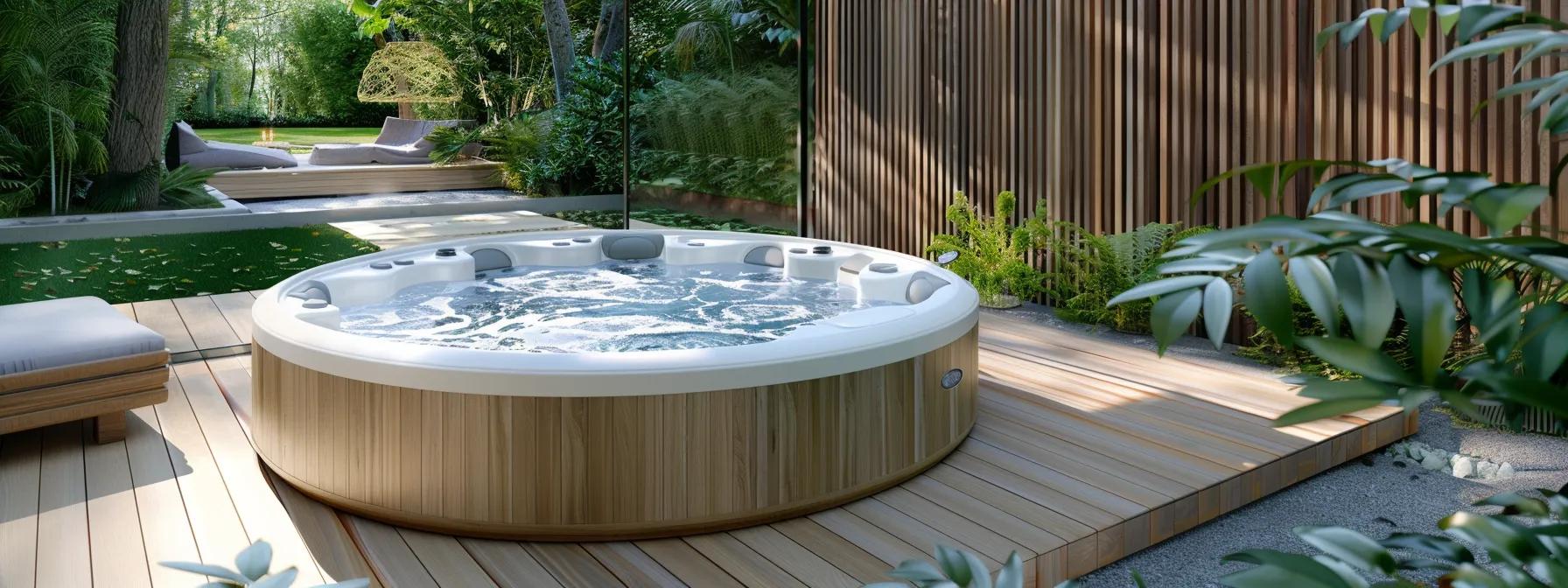
Exercise Swim Spas
Exercise swim spas combine the features of a plug and play hot tubs and a small pool. They use powerful jets, similar to energy efficient hot tubs, to create a swim current, offering both relaxation and low-impact exercise options. These versatile units support cardiovascular health, muscle toning, and hydrotherapy benefits, making them suitable for active individuals, including hot tubs for couples, and families looking to integrate fitness into their lifestyle.
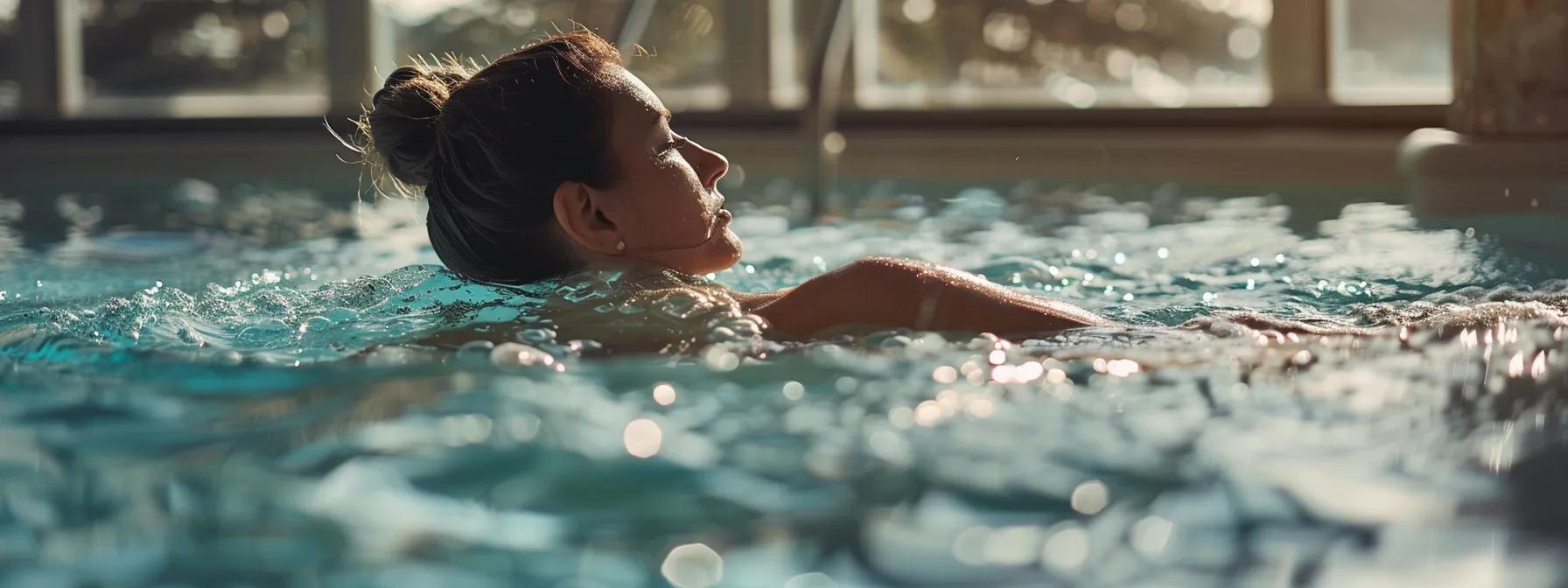
Rotationally Moulded Hot Tubs
Rotomolded hot tubs are constructed from high-density polyethylene using a rotational molding process that creates a seamless, durable structure. Many models now feature plug and play hot tubs elements, making setup remarkably simple. Known for their robustness and affordability, these energy efficient hot tubs are lightweight yet strong enough to withstand harsh weather. They often cater to hot tubs for couples, providing intimate yet durable leisure experiences. They offer a cost-efficient option for families or renters, though they might lack some of the luxury finishes seen in acrylic
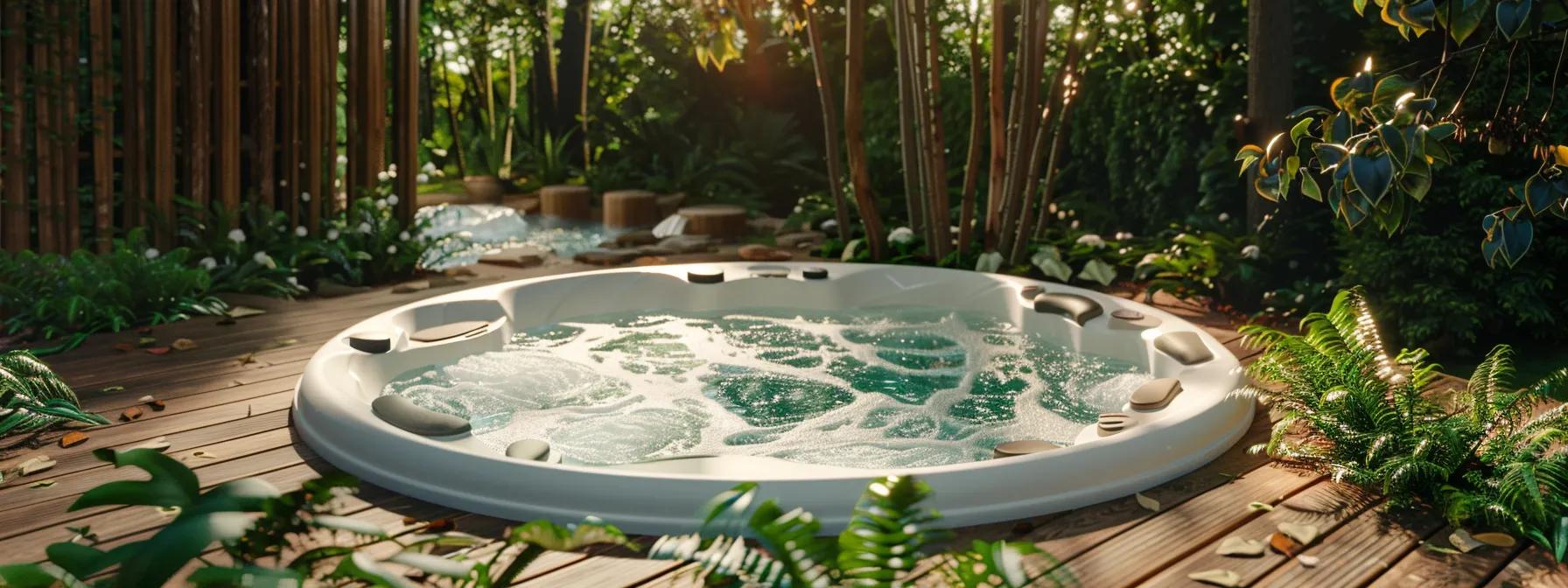
models.
Wood-fired Hot Tubs
Wood-fired hot tubs use a wood-burning stove for heating, acting as a guide to hot tubs for those seeking off-grid, sustainable options and exemplifying energy efficient hot tubs that create a unique, rustic ambiance. Though heating takes longer and requires more manual effort than electric models, the natural, earthy warmth and sustainability appeal to users, including hot tubs for couples who enjoy a traditional spa experience close to nature.
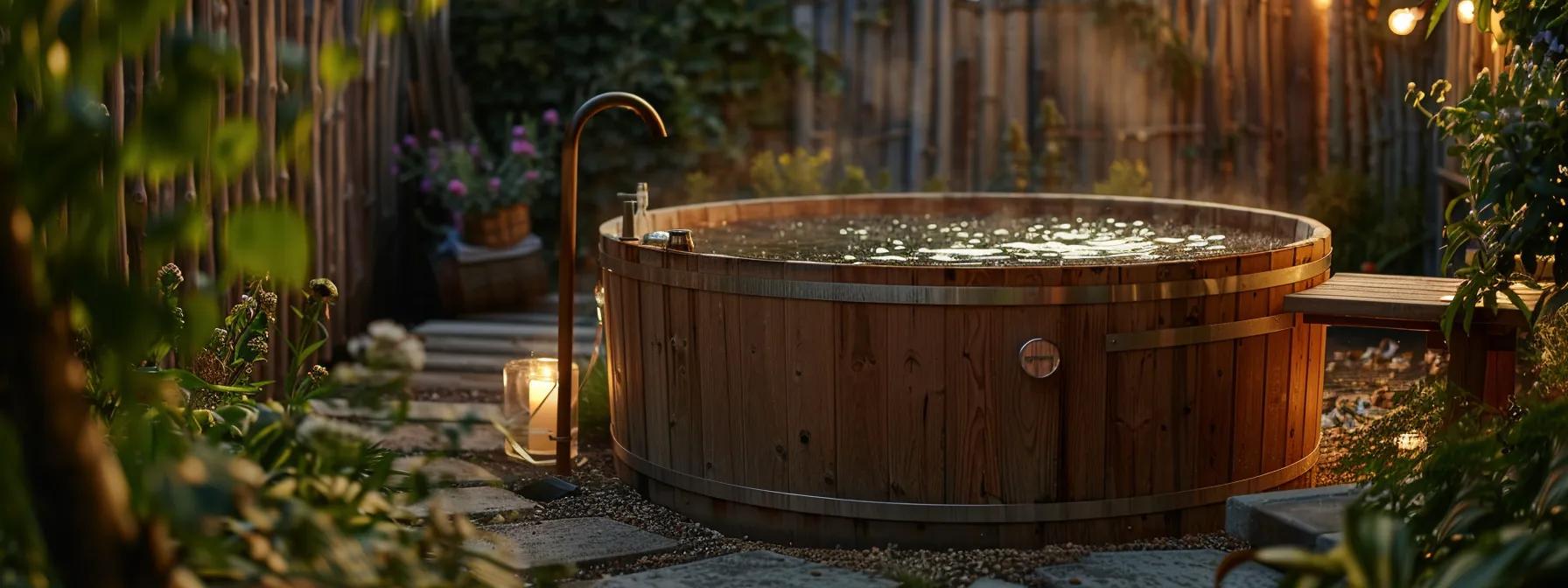
Square Hot Tubs
Square hot tubs, including plug and play hot tubs, offer a modern, geometric design that maximizes seating and optimizes weight distribution. Made from durable materials like acrylic or composite, these tubs often include features such as built-in cup holders, storage spaces, and integrated lighting, as suggested in a guide to hot tubs. Their efficient design makes them ideal for smaller patios or decks while maintaining a contemporary look, a hallmark of energy efficient hot tubs.
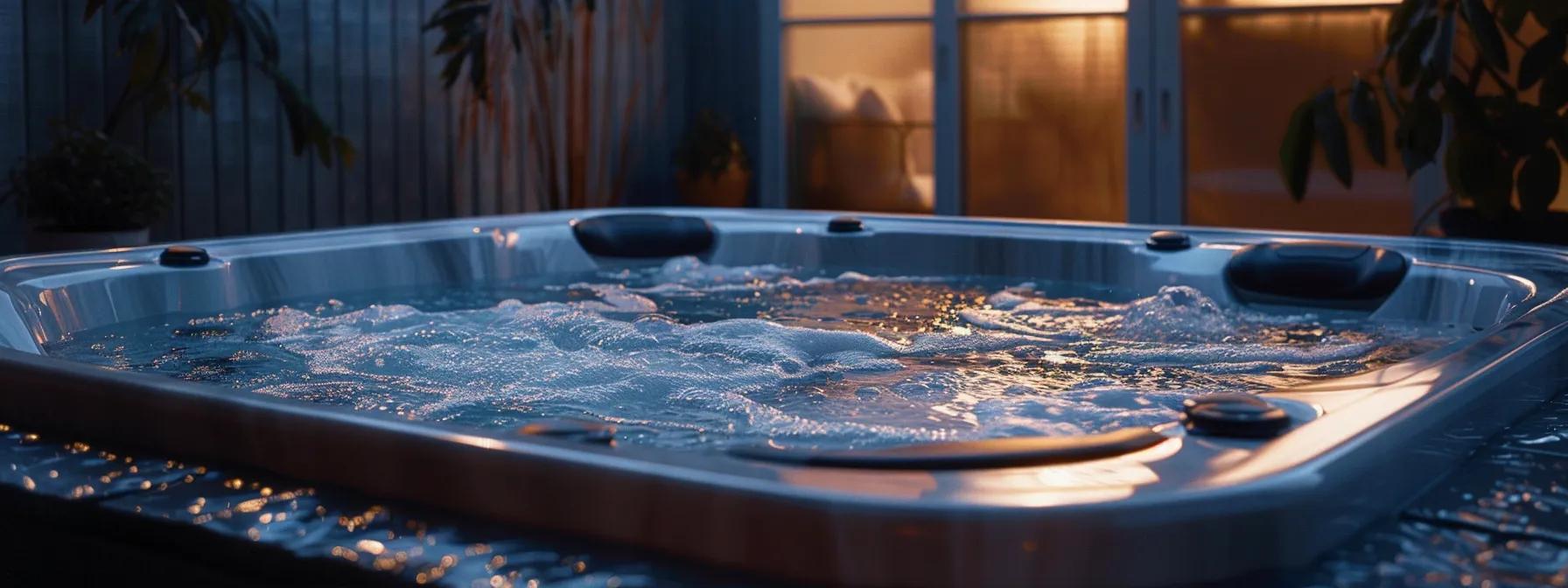
What Are the Different Types of Hot Tubs Available Today?
What Defines an Inflatable Hot Tub and Who Is It Best For?
Inflatable hot tubs are defined by their portability and ease of setup, often making them ideal plug and play hot tubs. Made from lightweight PVC and reinforced fabrics, these energy efficient hot tubs require only inflation and filling with water. They are best for individuals looking for a temporary solution or a start in the world of hot tubs, and can even serve as a popular option for hot tubs for couples seeking fast access to relaxation without commitment to permanent installation.
How Do Portable Hot Tubs Differ From Other Types?
Portable hot tubs offer enhanced durability through the use of reinforced plastics or composite fibers. Unlike inflatable models, they are built for semi-permanent outdoor installations and typically include advanced heating and filtration systems that help maintain the performance of energy efficient hot tubs. Their digital controls and customizable features are characteristic of plug and play hot tubs designs, making them an excellent choice for hot tubs for couples who desire a more refined, yet movable, spa experience.
What Are the Key Features of Acrylic Hot Tubs?
Acrylic hot tubs stand out due to their sleek design and energy efficiency, making them a prime example of energy efficient hot tubs that combine style with practicality. They offer a smooth, non-porous surface that is easy to maintain and excellent heat retention. With features like touchscreen controls, programmable jets, and LED lighting—traits often found in plug and play hot tubs – these tubs combine modern technology with durability, making them a top choice for homeowners, especially those looking for hot tubs for couples.
Why Choose Rotomolded Hot Tubs?
Rotomolded hot tubs, known for being energy efficient hot tubs, are a practical option for those seeking a resilient and cost-effective solution. Made from high-density polyethylene, they benefit from a seamless, impact-resistant design and require minimal maintenance due to their plug and play hot tubs setup. While they may not provide the high-end features of acrylic tubs, their durability and lower cost are ideal for families with high usage or those on a tight budget. They are also well-suited for hot tubs for couples who appreciate a more intimate and budget-friendly experience.
What Makes Wood-Fired Hot Tubs Unique?
Wood-fired hot tubs deliver an authentic, traditional experience through the use of wood-burning stoves for heating, a method embraced by energy efficient hot tubs enthusiasts seeking a natural warmth. This technique produces a deep, natural heat and creates a calming, rustic atmosphere that can be perfectly suited for hot tubs for couples looking to share a unique bathing experience. For those planning their setup, a guide to hot tubs can offer useful insights into maintaining such systems. Although they need more attention for temperature control and cleaning, their eco-friendly and off-grid appeal makes them an attractive option for nature lovers and sustainability enthusiasts.
How Do Swim Spas Combine Hot Tub and Pool Benefits?
Exercise swim spas integrate the soothing benefits of a hot tub with the functionality of a small pool – a concept well detailed in a guide to hot tubs. They feature powerful jets to generate adjustable swim currents, reflecting innovations seen in energy efficient hot tubs and catering to users who wish to combine relaxation with exercise. With options for both seated hydrotherapy and resistance swimming, these spas not only promote improved cardiovascular health and joint mobility but also serve as an excellent choice for hot tubs for couples, offering a versatile water experience.
What Are the Essential Features to Consider in Different Hot Tub Types?
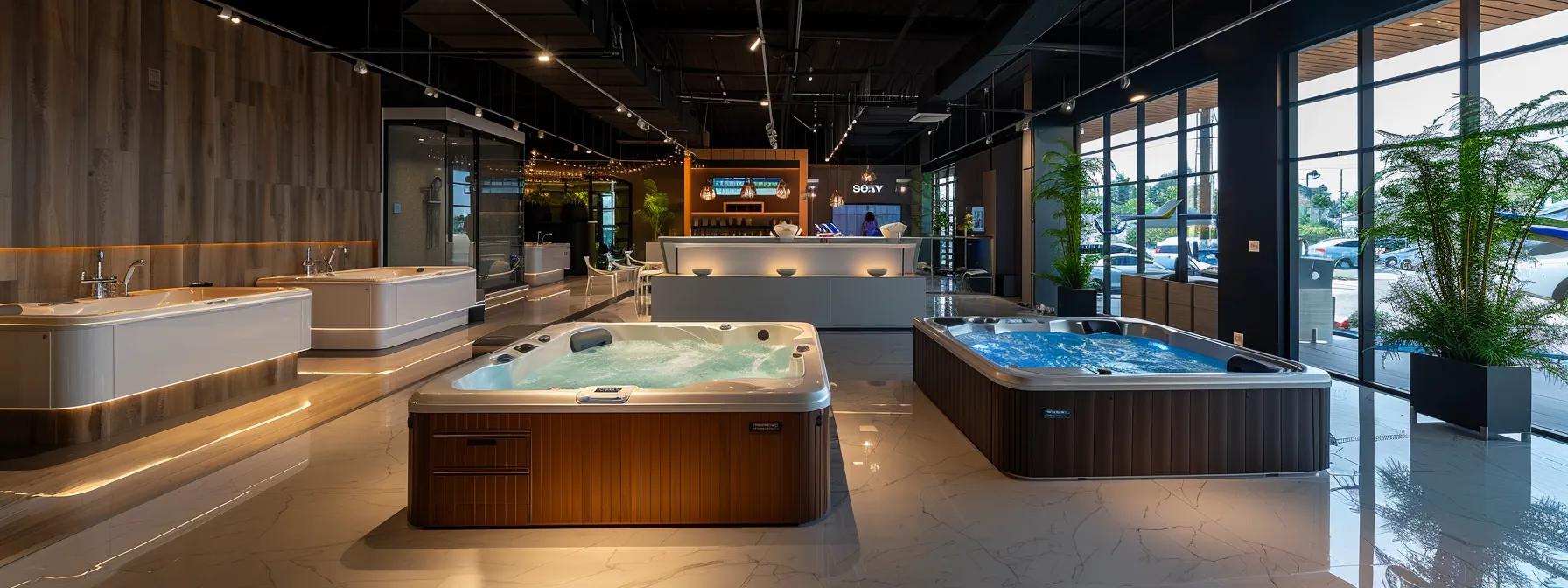
How Do Jets Enhance the Hot Tub Experience?
Jets are central to the therapeutic benefits of a hot tub, including energy efficient hot tubs that maximize performance. They provide targeted water pressure to massage muscles, improve circulation, and alleviate tension. Modern systems, such as plug and play hot tubs, allow users to adjust the intensity and direction of jets, enhancing both relaxation and hydrotherapy. Strategic placement of jets contributes significantly to overall comfort, making jet configuration a key consideration for hot tubs for couples.
What Lighting Options Are Available for Hot Tubs?
Lighting in hot tubs, such as energy efficient hot tubs, enhances both ambiance and safety. Integrated LED or fiber optic lighting systems often allow users to customize colors and brightness—much like plug and play hot tubs that offer simplicity in setup—creating a calming environment ideal for nighttime use. Beyond aesthetics, modern lighting options help improve visibility and create an inviting atmosphere for social gatherings, making hot tubs for couples a perfect choice for intimate evenings.
How Does Seating Capacity Affect Hot Tub Choice?
The seating configuration in a hot tub, especially in plug and play hot tubs, determines how many people can enjoy its benefits at once. Larger designs suit families or social events, while smaller setups are preferable for couples or solo relaxation, much like hot tubs for couples. Ergonomic seating that ensures easy access to jets and controls is essential – something a guide to hot tubs can help clarify. Buyers should review manufacturer layouts to ensure the seating arrangements meet their specific needs.
What WaterFiltration Systems Are Common in Hot Tubs?
Reliable water quality is maintained through efficient filtration systems often found in plug and play hot tubs. Common types include cartridge, sand, and diatomaceous earth filters, each designed to remove debris, bacteria, and oils effectively. Many modern systems, such as those integrated into energy efficient hot tubs, also include features like ozone or UV-C treatments to further enhance water clarity and hygiene, reducing the frequency of chemical treatments and maintenance. These advanced systems are ideal for intimate settings like hot tubs for couples, ensuring both performance and relaxation.
How Do Hot Tub Materials Impact Durability and Maintenance?
What Are the Advantages and Disadvantages of Acrylic Hot Tubs?
According to a guide to hot tubs, acrylic hot tubs are prized for their attractive, low-maintenance finish and excellent insulation. They maintain water temperature efficiently as energy efficient hot tubs do, and are easy to clean. However, their higher price point and susceptibility to scratches if mishandled can be drawbacks. Despite these minor issues, the overall performance and modern aesthetic make acrylic tubs a premium choice for hot tubs for couples.
How Do Rotomolded Hot Tubs Compare in Strength and Cost?
Rotomolded hot tubs, built from high-density polyethylene, are extremely durable and cost-effective, qualities shared by many plug and play hot tubs. Their seamless design minimizes weak spots, ensuring performance similar to that of energy efficient hot tubs while enabling them to endure heavy use and harsh conditions. Although they may not offer the luxury features of higher-end models, such as hot tubs for couples, their resilience and lower cost make them an appealing option for budget-conscious buyers or families needing a robust, dependable tub.
What Should You Know About Wood Hot Tubs’ Care and Longevity?
Wood hot tubs provide a warm, organic feel and excellent natural insulation, making them a popular choice among energy efficient hot tubs. However, as natural products, they demand regular upkeep including sealing, cleaning, and occasional refinishing to protect against moisture and UV damage, much like plug and play hot tubs. With consistent care, a wooden hot tub can offer long-term service and a charming aesthetic appealing to hot tubs for couples. Potential buyers should consult a guide to hot tubs and be prepared for the additional maintenance responsibilities.
What Are the Health and Social Benefits of Using Different Hot Tub Types?
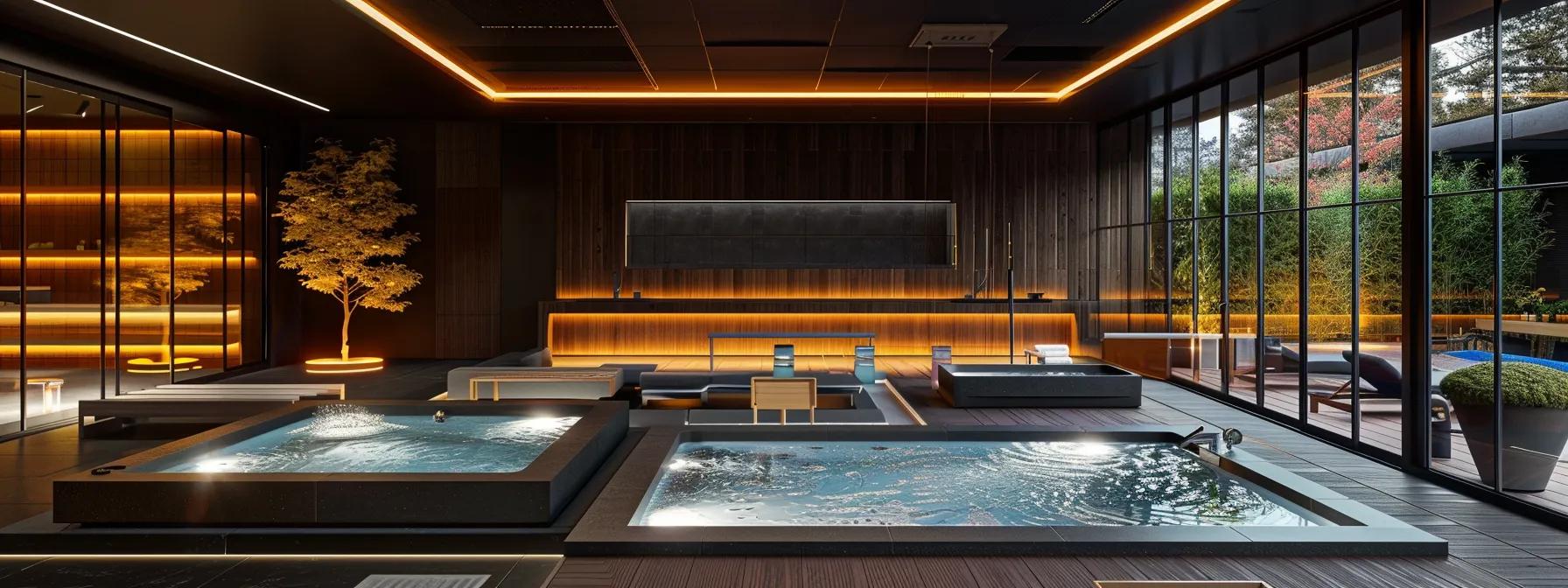
How Do Hot Tubs Promote Relaxation and Stress Relief?
The combination of warm water and strategically placed jets in a hot tub, much like the ones featured in a plug and play hot tubs lineup, creates a deep massage effect that relaxes muscles and relieves tension. This soothing hydrotherapy not only physically relaxes the body but also reduces stress by lowering cortisol levels, a benefit often highlighted in a guide to hot tubs. Regular use can contribute to better sleep and overall mental clarity, making a hot tub – especially if it’s an energy efficient hot tubs model—a personal sanctuary for relaxation.
Can Hot Tubs Help With Pain Relief and Arthritis?
The heat and massage provided by plug and play hot tubs can reduce joint stiffness and improve blood circulation, which is particularly beneficial for those with arthritis. Targeted jets in hot tubs for couples help relieve pain by massaging inflamed areas, and regular soaking in energy efficient hot tubs may reduce the need for pain medications. Over time, consistent use can improve joint mobility and overall physical function.
How Do Hot Tubs Enhance Socializing and Family Time?
Hot tubs create an inviting atmosphere that encourages conversation and bonding, with options such as energy efficient hot tubs available for those seeking a sustainable experience. Their warm, relaxing environment is ideal for small gatherings, family time, or romantic evenings, making them especially popular as hot tubs for couples. Integrated features like plug and play hot tubs with built-in speakers and ambient lighting further enhance these social experiences, helping to build lasting memories while providing a space to disconnect from digital distractions.
How to Choose the Right Hot Tub: Buying Guide and Cost Considerations
What Factors Should You Consider When Selecting a Hot Tub?
When selecting a hot tub, consider your intended use, available space, and budget. A well-written guide to hot tubs can help you navigate the options available. Evaluate the size and seating capacity – especially if you’re considering hot tubs for tall people – to ensure it meets your household’s needs. Materials and construction influence durability and maintenance, while features such as plug and play hot tubs, jet configuration, heating efficiency, lighting, and control systems directly affect your overall experience. Additionally, opting for energy efficient hot tubs can significantly reduce long-term costs related to energy consumption and water filtration.
How Much Do Different Types of Hot Tubs Typically Cost?
Costs vary widely, from budget-friendly inflatable models starting at a few hundred dollars to high-end acrylic or wooden tubs costing several thousand dollars. Additional expenses include installation, energy consumption, and routine maintenance. Buyers should assess overall value by comparing features against price and considering long-term operational costs.
Which Hot Tub Brands Are Most Trusted and Popular?
Brands like Hot Spring Spas, Jacuzzi, Sundance Spas, and Caldera Spas are well-regarded for quality, energy efficiency, and reliable customer support. Trusted brands provide detailed specifications, warranties, and service networks, ensuring ongoing support after purchase. Reviews and in-person demonstrations can further guide your decision.
What Are the Installation Requirements for Various Hot Tub Types?
Installation requirements vary by type. Inflatable and portable models can often be set up on a level deck or patio with a nearby electrical outlet. More permanent tubs such as acrylic, wooden, or rotomolded models may require reinforced decking or a concrete pad and professional installation to meet electrical and plumbing standards. Checking local building codes is essential for safe and long-lasting installation.
How Important Is Maintenance and Repair for Hot Tub Longevity?
Regular cleaning, water balancing, and periodic inspections are vital to extend the life of your hot tub. High-quality covers, proper water treatment, and scheduled professional service help prevent costly damage. Consistent maintenance ensures optimal performance and reliability, making it a critical factor in protecting your investment.
What Are the Best Practices for Hot Tub Installation and Maintenance?
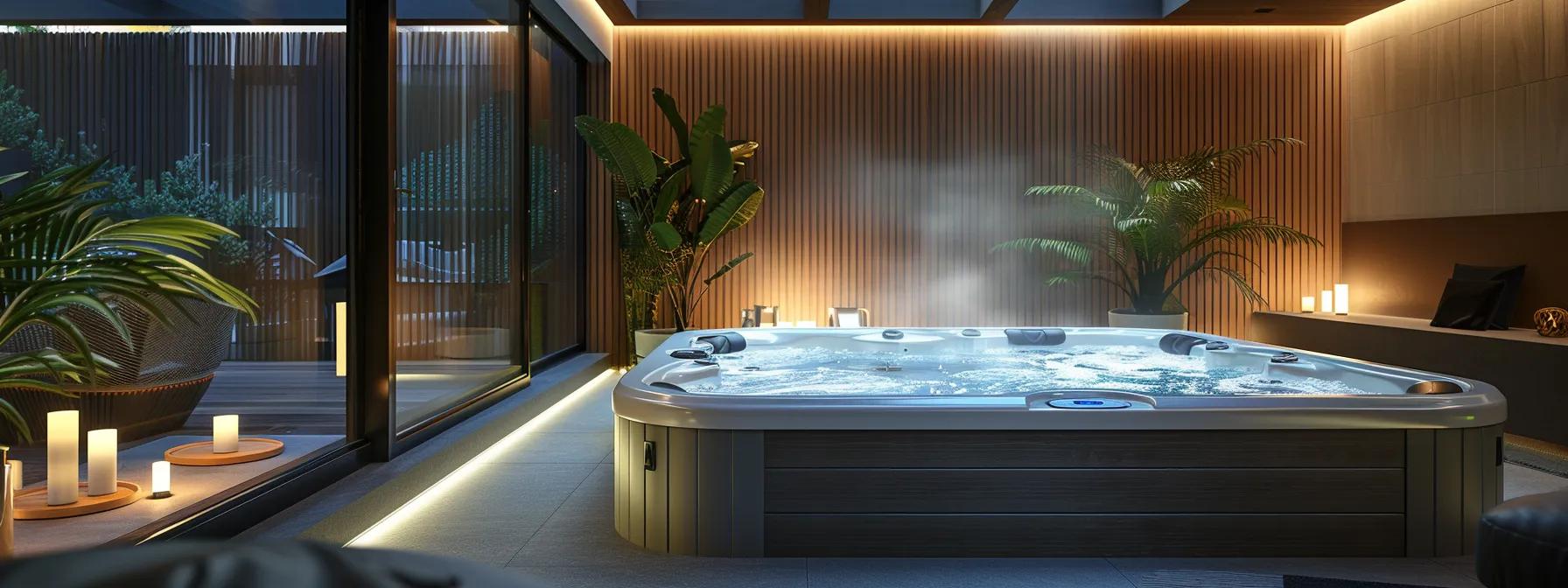
How Do You Properly Install Different Types of Hot Tubs?
Proper installation starts with choosing a flat, level site that meets the structural needs of your hot tub. For portable and inflatable tubs, ensure the surface is smooth and free from sharp objects. Permanent models require a stable base, such as reinforced concrete or a purpose-built deck. Secure electrical connections with proper grounding and design the area with adequate drainage to prevent water pooling. Following the manufacturer’s instructions and consulting professionals when necessary will ensure a safe installation.
What Are Essential Maintenance Tips for Each Hot Tub Type?
Each hot tub type has specific upkeep requirements. Inflatable models need regular inspections for leaks and prompt repairs. Portable and acrylic tubs benefit from routine water testing, cleaning filters, and maintaining correct chemical balances. Wooden hot tubs demand extra care with regular sealing and re-staining. Adhering to a maintenance schedule recommended by the manufacturer will help maintain water quality and prolong the life of your tub.
How Can You Troubleshoot Common Hot Tub Issues?
Troubleshooting usually starts with visual inspections and checking error codes on control panels. Issues such as inadequate heating or low water flow can often be resolved by checking the water level, cleaning filters, or recalibrating the thermostat. If jet performance decreases, clean the jets to remove any debris. For persistent problems, consult the manufacturer’s guide or contact a professional technician to avoid costly repairs.
What Are Common Questions About Different Types of Hot Tubs?
What Is the Most Affordable Type of Hot Tub?
Inflatable models are generally the most affordable option, with prices starting at just a few hundred dollars. They offer a temporary, low-cost solution for casual use, though they may not offer the durability or advanced features of permanent models.
How Long Does It Take to Heat a Hot Tub?
Heating times vary, but most models reach the desired temperature within 1–3 hours. Energy-efficient systems may take slightly longer, while larger or outdoor tubs might require additional time. Proper insulation and high-powered heaters can help reduce heating time.
Can You Use a Hot Tub Year-Round?
Yes, many hot tubs are designed for year-round use. Indoor installations typically maintain temperature with less energy, while outdoor models require proper insulation and regular maintenance during colder months to ensure safe and efficient operation.
Are Inflatable Hot Tubs Durable Enough for Regular Use?
Inflatable hot tubs are intended for occasional use and may not withstand the rigors of daily use over many years. For higher durability and frequent use, rigid portable or acrylic models are recommended.
How Energy-Efficient Are Modern Hot Tubs?
Modern hot tubs, especially acrylic and well-insulated portable models, are engineered for energy efficiency. Advances in insulation, heater technology, and programmable controls mean that energy savings can offset the initial cost over time.
Frequently Asked Questions
Q: How often should I change the water in my hot tub?
A: Change the water every 3 to 4 months, depending on use and water quality, to maintain a clean and healthy soaking environment.
Q: What is the ideal temperature for a hot tub?
A: The ideal temperature ranges from 100°F to 104°F, providing comfort and therapeutic benefits while ensuring safety.
Q: Do hot tubs require special electrical wiring?
A: Yes, permanent hot tubs typically need a dedicated electrical circuit installed by a certified electrician to meet safety standards.
Q: How do I prevent algae buildup in my hot tub?
A: Prevent algae by maintaining balanced chemical levels, cleaning filters regularly, and ensuring proper water circulation with occasional shock treatments.
Q: Can I use my hot tub for exercise purposes?
A: Yes, especially with exercise swim spas and select outdoor models that combine a hot tub with a small pool, allowing for low-impact exercise and hydrotherapy benefits.
Final Thoughts
Understanding the different types of hot tubs—from inflatable and portable to luxurious acrylic and traditional wooden models—is essential for making an informed decision. Each type offers its own advantages, whether through ease of setup, advanced features, or unique charm. By considering factors such as cost, maintenance, energy efficiency, and design, you can find the hot tub that best meets your needs and enhances your lifestyle. Explore your options and invest wisely to enjoy the lasting relaxation and health benefits a hot tub can bring.


